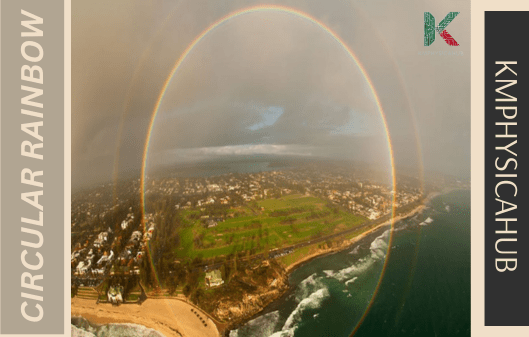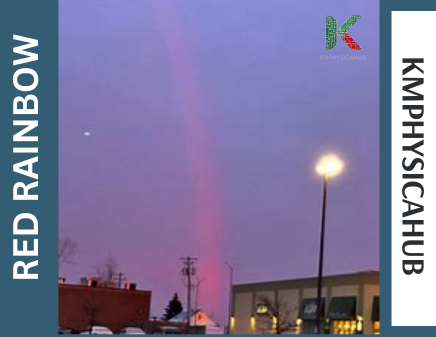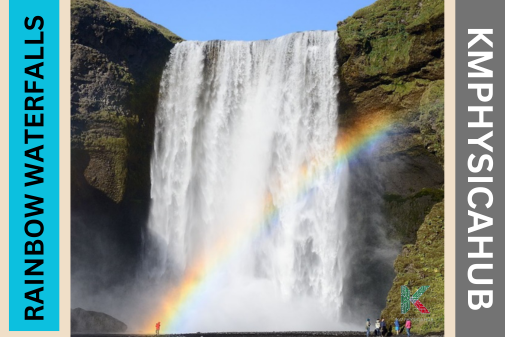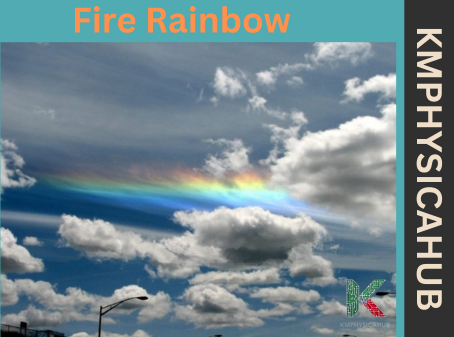Classic, Double, Circular, Sundogs, Fogbows, Moonbows and Red Rainbows | All Types Explained
Rainbow is a true masterpiece of nature, which has been symbolizing the variety and splendor of the sky for many years. Even though these perceptions are not realistic, rainbows have always been surrounded by myths and cultural connotations of hope and marvel. This article focuses on the details of the formation of rainbows, the types of rainbows, and the responses to the often asked questions about this colorful natural phenomenon.
Formation of Rainbow:
A rainbow is a striking meteorological display arising from the natural physical process of the refraction, internal reflection, and dispersion of light within rain droplets. Sun light when going through rain falls causes a series of colors to appear as a continuous band in the sky. The shape and colors of the rainbow are depicted as circular arc with violet color at the inner side and red color at the side perimeter.

Explanation for formation of rainbow:
- Sunlight Enters Water Drops: Light is deflected into a medium having a smaller refractive index with respect to air and so the speed of light in the medium becomes slower. It turns out to be refracted when it travels through the air and then through denser water.
- Internal Reflection and Refraction: Inside a water droplet, light is bounced off from the rear surface and bent (refracted) again as it passes through the droplet-based on this condition, the speed of light changes between air and water the flight is different due to the change of its speed in the air and water through the swiftness and water.
- Color Separation: A light source consists of light of different wavelengths or colors, as it is known popularly. When the light passes through the droplet, some of it is bent more than the other in a process known as differential refraction, and as the light re-emits through the droplet, those colors are visible. The violet light which has the shortest wavelength deviates most by far, while the red light with the longest wavelength deviates least.
- Rainbow Formation: Sometimes there appears a circle bending in the form of rainbow when the separated colors come out of the droplet. The order of colors from vertically starting top to bottom is violet, indigo, blue, green, yellow, orange and red. This beautiful arc is what we see and describe as a rainbow.

- Conditions for Seeing a Rainbow:
To see a rainbow:
- The Sun must be behind you.
- Water droplets need to be floating in the air (often after rain).
- The clouds should clear away from the Sun.

- Double Rainbows: Sometimes one can observe a faint second rainbow above the main one. The second rain bow forms due to double reflection on the inner surface of the droplets making the color sequence to be the opposite of the primary one.

Conditions for seeing a rainbow
Types of Rainbows:
Classic rainbow:
A single rainbow is produced by the reflection of light inside water droplets that hang in midair. The light bends (or refracts) as it goes in and out of the droplet, and produces the conventional rainbow starting with red on top and ending with blue below.


Double Rainbow:
If the sun’s rays reflect twice inside a raindrop, it results into a double rainbow. Therefore, you get two reflections, and they are obtained based on two different perspectives. The secondary rainbow (higher and lighter in color than the primary) has reversed colors: top blue and bottom red.
Not So Rare: Despite popular opinion to the contrary, double rainbows are not notably rare events. Though they are dramatic, they are not rare occurrences as one may presume them to be. Therefore, if you come across one, the best thing to do is to enjoy the magic.

Remember, rainbows aren’t fixed objects—they’re optical effects that appear when everything aligns just right.
Circular rainbow:
All rainbows are technically circular, but we usually see them as arches due to obstructions. From an airplane or high altitude, you might witness the full circle.
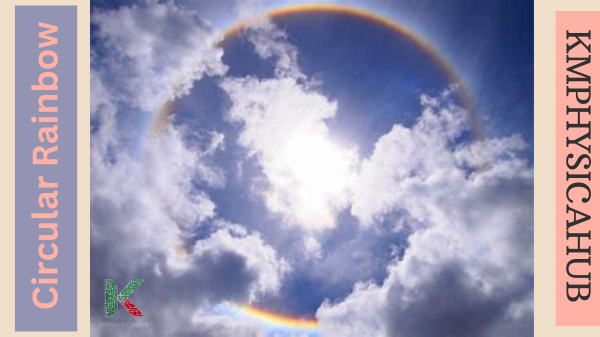
Red rainbow:
Red rainbow refers to a rainbow which is extraordinary in that it appears to be painted in the color red, and which can be witnessed at dawn or at dusk.

Here’s how it happens:
- Low Sun Angle: The red rainbows are observed when the sun is slightly above the horizon. Sunlight while passing thru the lower atmosphere, the blue and green components of light are dispersed.
- Color Separation: This is because when sunlight is beams through raindrops, the blue and green lights are scattered at shorter range and the red and yellow lights at longer range. This leads to a single-hued rainbow that is basically red and yellow in color.
- Similar to Sunsets: Red rainbows are as vibrant as rainbows we see during morning or evening. But the same atmospheric scattering produces both these magical moments.
Sundogs:
A sundog also referred to as a “parhelion” or a “mock sun” is an outstanding phenomenon that is experienced just along the horizon to the left and/or right of the sun.
- Appearance: Sundogs take the form of bright, rainbow colored diffracted patches. They frequently appear when the sun is near the horizon, that is during sunrise or close to sunset.
- Cause: These beautiful halos are produced by sunlight bending round six sided ice crystals (hexagonal) present in high altitude cirrus clouds. This set of crystals has a dominant axis that has its orientation along the vertical axis.
- Position: Sundogs can be observed at a distance of up to 22 degrees from the sun. At times, a single pair of sundogs is observed, one on a left side of the Sun, the other on the right side.
- Colors: Sundogs are pale, and they could be red, orange, or maybe shades of blue. They often accompany other atmospheric phenomena like the 22° halo and circumzenithal arc.
Fogbows:
Popularly known as white rainbows, the fogbows occur in fogs or mists. It lacks clear bright colors, and they look like pale arcs.
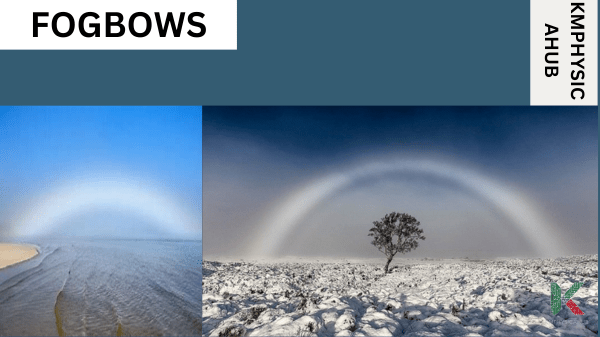
Waterfall rainbows:
Rainbow waterfalls can be described as bright and fascinating natural displays which occur at waterfalls where sunlight and colors mix.
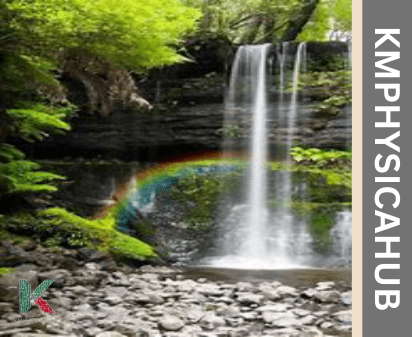
Here’s why they happen:
- Sunlight and Mist: In the case of water falling from a waterfall, it produces droplets also known as mist or spray. These streams of water contain light and bend and reflect light around them. There is a constant and unimpeded supply of water to the nozzle and this maintains the mist in the air.
- Color Spectrum: Then, when the light of the sun illuminates the mist, a good number of colors is produced in order to form a rainbow. These rainbows are typically seen near falls and give the area a bit of fairy-tale like feeling.
Moonbows:
A “moonbow”, or a “lunar rainbow”, is basically similar to the solar rainbow because it is observed when moonlight, similar to the sunlight, falls on water droplets. Here’s why moonbows occur:
- Light Source: While solar rainbows appear because of direct sunlight, moonbows occur because of the moonlight present. This process involves the scatter of Moon light in water droplets which may be rain drops or water falling in a water fall.
- Faintness: Moonbows are much fainter than solar rainbows because moon has lesser light reflection abilities compare to the sun. Observant people see colors in moonbows but often they are white to human eyes. But, through the guidance of a photograph taken with exposure for many hours, their colors become faint.
- Viewing Conditions:
To observe moonbows:
- The Moon should be at or near its brightest phase (full moon).
- The Moon must be low in the sky (preferably below 42 degrees).
- The night sky should be very dark.
- Water droplets (from rain or spray) must be opposite the Moon.
- Moonbows are rarer than daytime rainbows due to these specific requirements.
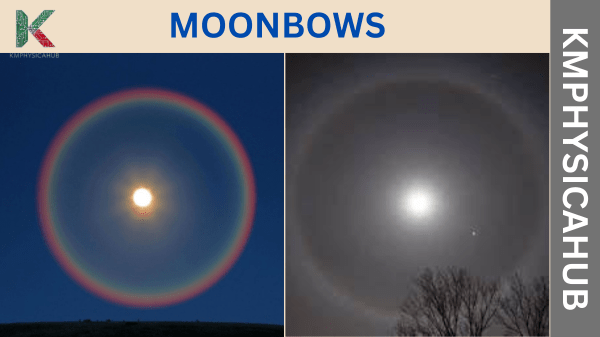
Fire Rainbow:
A circum-horizontal arc or a fire rainbow is an interesting type of an atmospheric optical phenomenon that can be observed in the skies.
- Appearance: They are not fire, nor rainbows but they are referred to as fire rainbows due to the pastel colors of this phenomenon and the flame like structure that they form. When noticed, they look like arcs of different colors and hues of the rainbow.

- Formation: These arcs are formed due to refraction of light in plate like structures of ice particles that are present in the high altitude cirrus clouds. The hexagonal ice crystals are actively involved in the process of diffusing and refracting sunlight and thus, are responsible for formation of the phenomenon.
- Rare Beauty: A fire rainbow is not very often spotted and therefore, fascinating to see. Thus, if you have an opportunity to witness one, learn about the interaction of light and ice crystals in the sky.
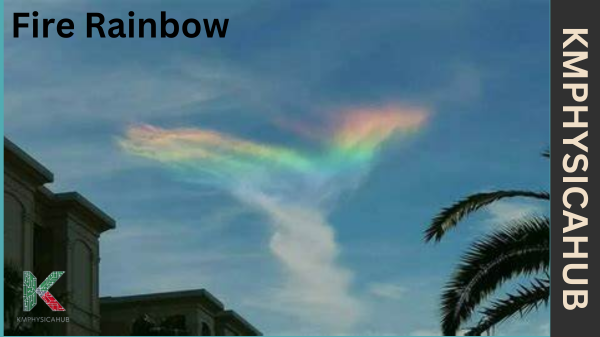
Fun Facts About Rainbows
Here are some delightful tidbits about rainbows:
Glory: Imagine being in an airplane and seeing your own circular shadow surrounded by a colorful halo. That’s a glory! It happens when sunlight interacts with tiny water droplets or mist, creating concentric rings of colors around your shadow. Pilots and mountaineers often witness this phenomenon.
Rainbows in Mythology: The colors of a rainbow represent hope, blessing, and unity in all the various cultures. In the Viking’s folklore, the rainbow bridge referred to as Bifrost was a bridge that connected the gods’ and human realms. Mentioned in Greek tales, Iris was the goddess of Rainbows hence performing the task of delivering messages from Earth to Olympus.
Chasing Rainbows: The phrase ‘chasing rainbows’ is a phrase that is used to indicate a given situation where people attempt to locate something that is unattainable at that particular moment. This is due to the fact that even if one has to go to a position where the physical part of a rainbow appears to end, it looks like it shifts further away when one gets close.
Conclusion
Rainbows, as bright colors combined with their many types and shapes, continue being one of the amazing nature’s gifts. These formations have been built on the bases of Optics and Meteorology and remain a source of interest for science lovers as well as common people. Such classifications add more value to the understanding of rainbows as something natural and beautiful in the world which we live in.
FAQs
Q1: Why does the interior of the rainbow look black like the inside of an inkwell?
A: The inside part of a primary rainbow looks darker because light gathered in the thin arc of the bow and fewer scatter in the immediately adjacent area within the bow.
Q2: What followed the number seven in a rainbow?
A: There are primary seven colors which can be easily identified from rainbow, namely; red, orange, yellow, green, blue, indigo and violet. These are because of the refraction of light where light is manipulated in a way that it gets diffused into various colors forming the visible light spectrum. The seven-color distinction is believed to have been invented by Sir Isaac Newton but is indeed a plain structure based on the characteristic of light.
Q3: Is it possible for a rainbow to be complete in the form of a circle?
A: Yes, a rainbow can form a circle though this can only be observed from an above view like that of a bird, plane among others. The ground typically obscures the lower half of the circle, if seen from the perspective of the Earth’s surface.
Q4: Is the rainbow a phenomenon limited to only the earth?
A: Rainbows can be observed most frequently on Earth as a result of water and atmosphere, but other planets which have both these factors may have similar optical phenomena, for example Titan, the moon of Saturn.
Q5: Why does the reverse colors of secondary rainbows are in the opposite order?
A: The second one has half the wavelength than the first because it has two internal reflections inside the raindrops causing the colors to be inverted. Once again, the study of rainbows is not just for beauty’s sake, but also for science; it teaches people the principles of physics behind the rainbows with different colors. Continue to behold the beauty of rainbows that is a blend of the harmonious combination of light and water in the atmosphere.




